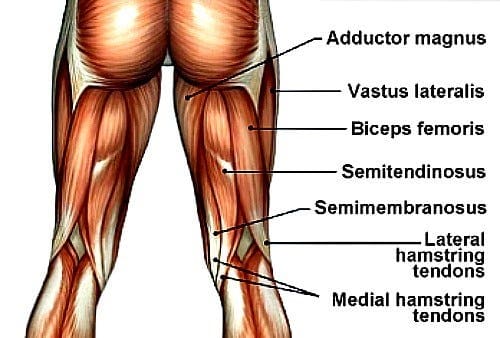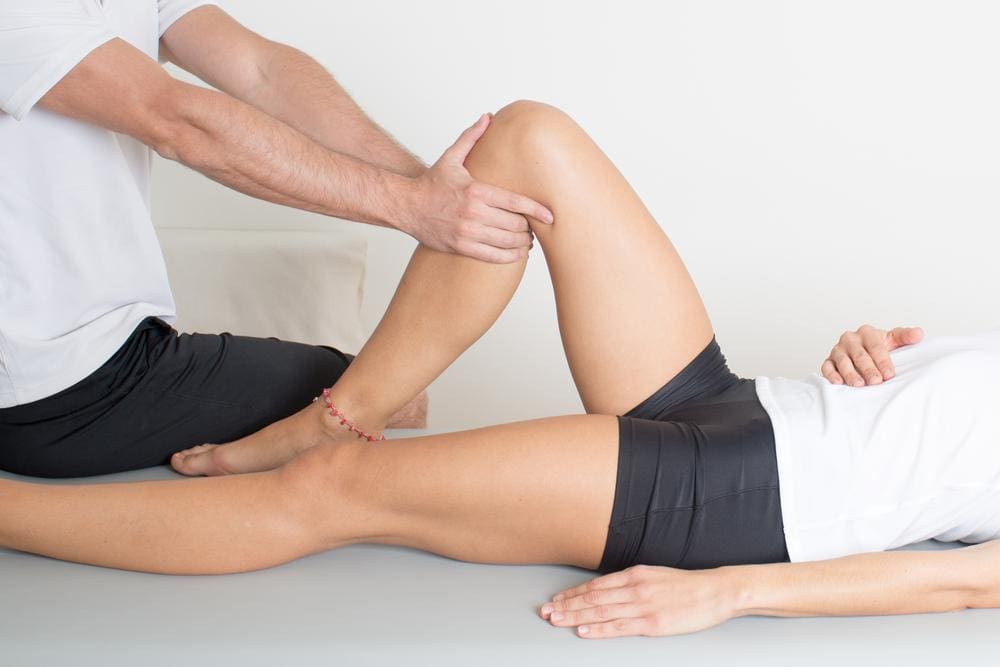Table of Contents
Introduction
The thigh muscles provide mobility and stability to the hips and upper body. They allow for leg extension and flexion while also stabilizing the pelvis. The adductors and hamstrings are two muscle groups that work together to enable running, jumping, squatting, and sprinting. However, overuse of these muscles can lead to musculoskeletal pain, which can cause discomfort and misalignment in the body. This article will focus on the hamstring and adductor muscles, the impact of muscle pain and strain on these muscles, and how MET therapy can help. We utilize and incorporate valuable information about our patients to certified medical providers using MET therapy to relieve chronic muscle pain associated with the hamstrings and the adductor muscles. We encourage and refer patients to associated medical providers based on their findings while supporting that education is a remarkable and fantastic way to ask our providers the essential questions at the patient’s acknowledgment. Dr. Alex Jimenez, D.C., comprises this information as an educational service. Disclaimer
Hamstrings & Adductor Muscles
Do you feel pain in your upper thigh? Does walking or running cause you problems? Are you experiencing pain in your knees when you stretch your legs? These issues may be related to the hamstrings and adductor muscles in your thighs. These muscles provide stability and mobility to your thighs and lower extremities. Studies reveal that the hamstring muscles are a group of three individual muscles that play a crucial role in daily activities. Their main functions include:
- Hip extension and knee flexion.
- Allowing you to perform a variety of movements, such as standing and sprinting.
- Jumping.
The hamstrings and adductors play important roles in a person’s gait cycle and in controlling pelvic posture. The hamstrings help extend the hip and flex the knee, while the adductor muscles stabilize the hips and pelvis. Research studies show that the adductor muscles come from the pelvis and stop at the femur in the legs. They are crucial for stabilizing the pelvis and maintaining balance in the lower limbs during walking. However, these muscles are prone to injuries despite their significant roles in lower extremity function.
Muscle Pain & Strain On The Hamstring-Adductors
Injuries to the hamstrings and adductor muscles can result from several factors. Overstretching the adductor muscles may lead to high hamstring pain, while athletes may experience limping if they pop their hamstrings. Studies reveal that eccentric actions on these muscles can cause extreme joint positions, making the muscle fibers vulnerable to strain-related injuries. Repetitive movements can develop small nodules known as trigger points that cause radiating pain to the hamstrings and adductor muscles. Additional studies reveal that a lack of mechanical advantage can make these muscles susceptible to strain. Fortunately, various treatments are available to alleviate muscle pain and strain in the hamstrings and adductors.
Why Choose Chiropractic?- Video
Do you have muscle pain in your hamstrings or adductor muscles? Does it cause you to limp or feel tightness in your hamstrings? These issues are related to muscle pain affecting these muscles, which work together to provide stability and mobility to the lower extremities. Environmental factors or repetitive actions can lead to overlapping risk factors, causing misalignment and dysfunction in the body. This can lead to muscle disability and difficulty walking. Fortunately, chiropractic care and soft tissue treatments like MET therapy can help reduce pain and re-mobilize the joint back to functionality. The video above explains how chiropractic care uses manual manipulation to reduce spine subluxation while stretching and strengthening the muscles surrounding the joints.
MET Therapy Assessing The Hamstrings & Adductors
If you’re experiencing muscle pain and strain in your hamstrings and adductor muscles, treatments available can help. According to a book by Leon Chaitow and Judith Walker DeLany, called “Clinical Application of Neuromuscular Techniques,” pain specialists use muscle energy techniques (MET) can be used to stretch the affected muscles and reduce pain in that area. Using MET, pain specialists can also help restore mobility and flexibility to your thigh and lower body extremities. This treatment can be very helpful in relieving pain and restoring stability to your body.
Conclusion
The hamstrings and adductor muscles work together to provide stability and mobility to the thighs and lower extremities. While they have similar and different functions, both are crucial for standing, running, and walking. However, injuries can occur when these muscles are overstretched or damaged due to repetitive actions, resulting in misalignment in the body. Fortunately, soft tissue treatments such as MET therapy or chiropractic care can help realign the body, stretch out the muscle tissues, and restore mobility and stability to these muscles. This can help individuals walk without experiencing any pain.
References
Afonso, José, et al. “The Hamstrings: Anatomic and Physiologic Variations and Their Potential Relationships with Injury Risk.” Frontiers in Physiology, 7 July 2021, www.ncbi.nlm.nih.gov/pmc/articles/PMC8294189/.
Chaitow, Leon, and Judith Walker DeLany. Clinical Applications of Neuromuscular Techniques. Churchill Livingstone, 2003.
Jeno, Susan H, and Gary S Schindler. “Anatomy, Bony Pelvis and Lower Limb: Thigh Adductor Magnus Muscle.” In: StatPearls [Internet]. Treasure Island (FL), 1 Aug. 2022, www.ncbi.nlm.nih.gov/books/NBK534842/.
Rodgers, Cooper D, and Avais Raja. “Anatomy, Bony Pelvis and Lower Limb, Hamstring Muscle.” In: StatPearls [Internet]. Treasure Island (FL), 29 Jan. 2022, www.ncbi.nlm.nih.gov/books/NBK546688/.
Tyler, Timothy F, et al. “Groin Injuries in Sports Medicine.” Sports Health, May 2010, www.ncbi.nlm.nih.gov/pmc/articles/PMC3445110/.
Disclaimer
Post Disclaimer
Professional Scope of Practice *
The information herein on "MET Therapy for Adductor & Hamstring Muscle Pain" is not intended to replace a one-on-one relationship with a qualified health care professional or licensed physician and is not medical advice. We encourage you to make healthcare decisions based on your research and partnership with a qualified healthcare professional.
Blog Information & Scope Discussions
Welcome to El Paso's Wellness blog, where Dr. Alex Jimenez, DC, FNP-C, a board-certified Family Practice Nurse Practitioner (FNP-C) and Chiropractor (DC), presents insights on how our team is dedicated to holistic healing and personalized care. Our practice aligns with evidence-based treatment protocols inspired by integrative medicine principles, similar to those found on dralexjimenez.com, focusing on restoring health naturally for patients of all ages.
Our areas of chiropractic practice include Wellness & Nutrition, Chronic Pain, Personal Injury, Auto Accident Care, Work Injuries, Back Injury, Low Back Pain, Neck Pain, Migraine Headaches, Sports Injuries, Severe Sciatica, Scoliosis, Complex Herniated Discs, Fibromyalgia, Chronic Pain, Complex Injuries, Stress Management, Functional Medicine Treatments, and in-scope care protocols.
Our information scope is limited to chiropractic, musculoskeletal, physical medicine, wellness, contributing etiological viscerosomatic disturbances within clinical presentations, associated somato-visceral reflex clinical dynamics, subluxation complexes, sensitive health issues, and functional medicine articles, topics, and discussions.
We provide and present clinical collaboration with specialists from various disciplines. Each specialist is governed by their professional scope of practice and their jurisdiction of licensure. We use functional health & wellness protocols to treat and support care for the injuries or disorders of the musculoskeletal system.
Our videos, posts, topics, subjects, and insights cover clinical matters, issues, and topics that relate to and directly or indirectly support our clinical scope of practice.*
Our office has reasonably attempted to provide supportive citations and has identified the relevant research studies or studies supporting our posts. We provide copies of supporting research studies available to regulatory boards and the public upon request.
We understand that we cover matters that require an additional explanation of how they may assist in a particular care plan or treatment protocol; therefore, to discuss the subject matter above further, please feel free to ask Dr. Alex Jimenez, DC, APRN, FNP-BC, or contact us at 915-850-0900.
We are here to help you and your family.
Blessings
Dr. Alex Jimenez DC, MSACP, APRN, FNP-BC*, CCST, IFMCP, CFMP, ATN
email: coach@elpasofunctionalmedicine.com
Licensed as a Doctor of Chiropractic (DC) in Texas & New Mexico*
Texas DC License # TX5807
New Mexico DC License # NM-DC2182
Licensed as a Registered Nurse (RN*) in Texas & Multistate
Texas RN License # 1191402
ANCC FNP-BC: Board Certified Nurse Practitioner*
Compact Status: Multi-State License: Authorized to Practice in 40 States*
Graduate with Honors: ICHS: MSN-FNP (Family Nurse Practitioner Program)
Degree Granted. Master's in Family Practice MSN Diploma (Cum Laude)
Dr. Alex Jimenez, DC, APRN, FNP-BC*, CFMP, IFMCP, ATN, CCST
My Digital Business Card




